By Scott Westerman
 “The closing of the last mega buggy whip store”. That’s the header of an email we received from our good friend John Kajander about the final days of the Virgin’s Mega-store in NYC. He included this link to Ben Sisario’s NYT story about the demise of the retail record business.
“The closing of the last mega buggy whip store”. That’s the header of an email we received from our good friend John Kajander about the final days of the Virgin’s Mega-store in NYC. He included this link to Ben Sisario’s NYT story about the demise of the retail record business.
We all remember buying our black vinyl at Harmony House, E.J. Korvettes, Hudsons and Discount Records back in the day. And more than one Keenerfan has written us over the years wondering if the decline of the record industry truly began when CDs marginalized the power of album art.
When LPs ruled the world, artists were defined and sometimes diminished by how they branded themselves on their album covers. Here are a few of our faves.
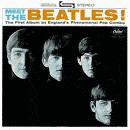 Meet The Beatles:
Meet The Beatles:
The quintessential debut album from the 60s. Often imitated in family photos, too. I remember seeing something almost identical with four members of a family in black and white. Capitol gutted the EMI British release to be able to create a US-only Second Album and the tracks included both Beatle originals and standards (remember Paul singing “Till There Was You” from the Music Man?) In our neighborhood, one of the boys holding a cigarette (on the back of the album) was a scandal.
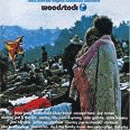 Woodstock
Woodstock
Perhaps the first double LP that many of us bought. Those who were there say that the cover gave a good vibe for the mixture of emotional highs and lows associated with the concert that got out of hand. The album, and the film made superstars out of then lesser known acts like Sha-Na-Na and Richie Havens and elevated Joe Cocker, Ten Years After and Santana to new heights. In the “what were they thinking” department, the managers for Creedence Clearwater Revival and the Grateful Dead refused to let their clients appear in the film. It wasn’t until this year that their footage, along with performance by Mountain and Johnny Winter found eyeballs on the blu-ray DVD edition.
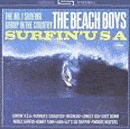 The Beach Boys – Surfin USA
The Beach Boys – Surfin USA
Growing up in Detroit, many of us had never seen one of those trademark 20 footers. The album photograph made it look much, much bigger. This record holds the distinction of being the first Beach Boys LP released in Stereo, although Brian Wilson didn’t participate in the original stereo mix downs. Chuck Britz, a Capitol records engineer, did the work. Prior Beach Boys collections were released in mono and something called Duophonic, where the voices were in one channel and the instrumentation in another. The late CD collections feature much better stereo mixes that give a feel for the full depth of Brian’s genius.
 Pink Floyd – Dark Side of the Moon
Pink Floyd – Dark Side of the Moon
The prism itself became the group’s trademark and the album went on to be one of the longest running Hot 100 LPs in Billboard history. Dark Side of the Moon was a one of those LPs that we used to let track all the way through during homework, to augment the effect of the mind-bending chemistry of the day, or as we tried our best to consummate our current romantic intentions. Whatever radio station you listened to in the early 70s probably used the instrumental vamp from “Breath” as the bed for whatever contest they were promoting at the time. Chicago radio fans will well remember it as the background for WCFL’s “Last Contest.”
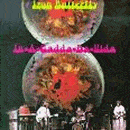 Iron Butterfly – In-A-Gadda-Da-Vida
Iron Butterfly – In-A-Gadda-Da-Vida
Every drummer who came of age in the 60s remembers Ron Bushy’s drum solo displacing “Wipe Out” as the definition of percussive chops. The story goes that the title was keyboard player Doug Ingle’s alcoholic mispronunciation of “In The Garden of Eden”. That’s a 17 year old former violin prodigy Erik Bann breaking psychedelic ground on guitar. Along with Led Zeppelin’s “Stairway to Heaven” and Elton John’s “Funeral for a Friend”, In-A-Gadda-Da-Vida was a DJ favorite, whenever we needed an uninterrupted 17 minutes to catch up on our homework.
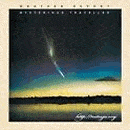 Weather Report – Mysterious Traveler
Weather Report – Mysterious Traveler
Back when I was at Michigan State University, we had a poster of this album cover in the lobby of our student radio station. I had never heard of Weather Report, but that poster alone made me want to buy the LP.
Times change. The paradigm of how to earn a living as a musical artist is more about merchandising and concertizing than it is about selling CDs and LPs. And there’s an interesting postscript to this inevitable evolution. If you kept your record collection in good condition, you might just be able to sell your albums on EBay.. as art, something that could end up in a frame in someone’s living room.
Comments:
Andru Reeve at 4:44pm June 15 on Facebook
Thankfully, we still have two great chains out here — Amoeba and Rasputin’s. Both operate under a different business model than Virgin and Tower did, so I think they’ll both be in business for awhile; they’re both always packed with customers who BUY stuff. Both stores sell an abundance of used product — CDs, DVDs, LPs. They appeal to both the music novice and the heavy collector. They don’t price things at LIST PRICE the way the two defunct chains did. Deep, deep discounts on new CDs. Also, they have web presence and, I believe, MP3 sales. Both chains have HUGE inventories, too. But … perhaps the most important thing is LOCATION; the stores all tend to be in population hubs that service up to a million folks. The stores are near busy highways and NOT in malls.
Scott Hanley at 5:24pm June 15 on Facebook
Hard to fit much artwork on a thumb drive…nice memories, Scott. And what of all those green sleeve 45’s for those of us in the radio biz….
Laura Smigielski Garcia at 7:02pm June 15 on Facebook
Do you remember when Peaches opened in Dearborn in mid 70s? That was the COOLEST record store ever. The lines to get in went clear around the bldg when they opened. Now we just have to be happy with itunes, I guess.
Dale Leslie at 9:03pm June 15 on Facebook
Personally, I preferred the Liberty Music Shop in Ann Arbor whose owner made a sensible decision when he relocated: he moved two blocks east on Liberty Street. Such atmosphere: the year-around screen door; the Gulf no-pest strips; the clerk whose breath was so putrid, the kids tipped her over on Halloween and remember?, every album jacket was empty (no kidding) because they stored the vinyl originals behind the cash-out counter. Brilliant!
Gary Mescher at 820pm June 16
You just had to drag me down memory lane at this late hour. Interesting insights as usual. I recall the Weather Report poster for the Heavy Weather album tacked on a wall in one of the WMSN studios around 1974. I still have all my college albums – having sold my baseball cards in 1980 (for $400) I am NOT going to see these memories from college days. I suspect there is some validity to the speculation that the down sizing of album art via the introduction of CD music technology did something to speed the demise of the album.
Chris Morton on June 17
We started buying LPs in the basement of B’hams’ Cunningham Drugs until Discount Records appeared in town. Soon a couple of us rabid (sic) collectors were buying a mix of LPs by the box, getting an additional discount for volume purchasing. Ten-plus years later, I looked forward to a yearly visit to Sam’s Jams, again spending hours and hours and buying boxes of LPs. Today all of that, and much, much more, sits on my media server. But yeah, I sure do miss the art!

